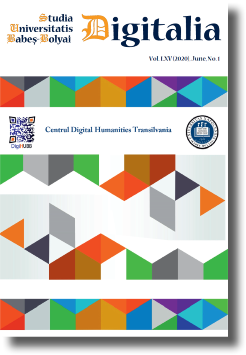What are studia digitalia?
Abstract
More than half a century ago an American professor of English literature, Joseph Raben, founded Computers and the Humanities, the first journal in the field. In the first article of its first issue Louis Milic wrote with uncommon clarity of vision that, “the true nature of the machine is unknown to us, but it is neither a human brain nor a mechanical clerk. The computer has a logic of its own, one which the scholar must master if he is to benefit from his relations with it. Its intelligence and ours must be made complementary, not antagonistic or subservient to each other…. The computer can be made an extension of man only if it opens avenues we have not suspected the existence of” (1966: 4).Mimesis of human behaviour is not the goal, at least not for scholarship, he suggested. Testing the machine against a human benchmark (whatever that might be) to determine whether it has reached a state of ‘artificial intelligence’ isn’t either, for by coming into contact with digital glimmerings of intelligence we realise that it is plural and that its plurality makes it a question. “Thinking in a new way”, as such questioning demands, “is not an easy accomplishment”, Milic wrote. “It means reorientation of all the coordinates of our existence.” (1966: 5) Milic entitled his article “The Next Step”. It is a step we have only taken, if at all, falteringly.
Downloads
Published
How to Cite
Issue
Section
License
Copyright (c) 2017 Studia Universitatis Babeș-Bolyai Digitalia

This work is licensed under a Creative Commons Attribution-NonCommercial-NoDerivatives 4.0 International License.


